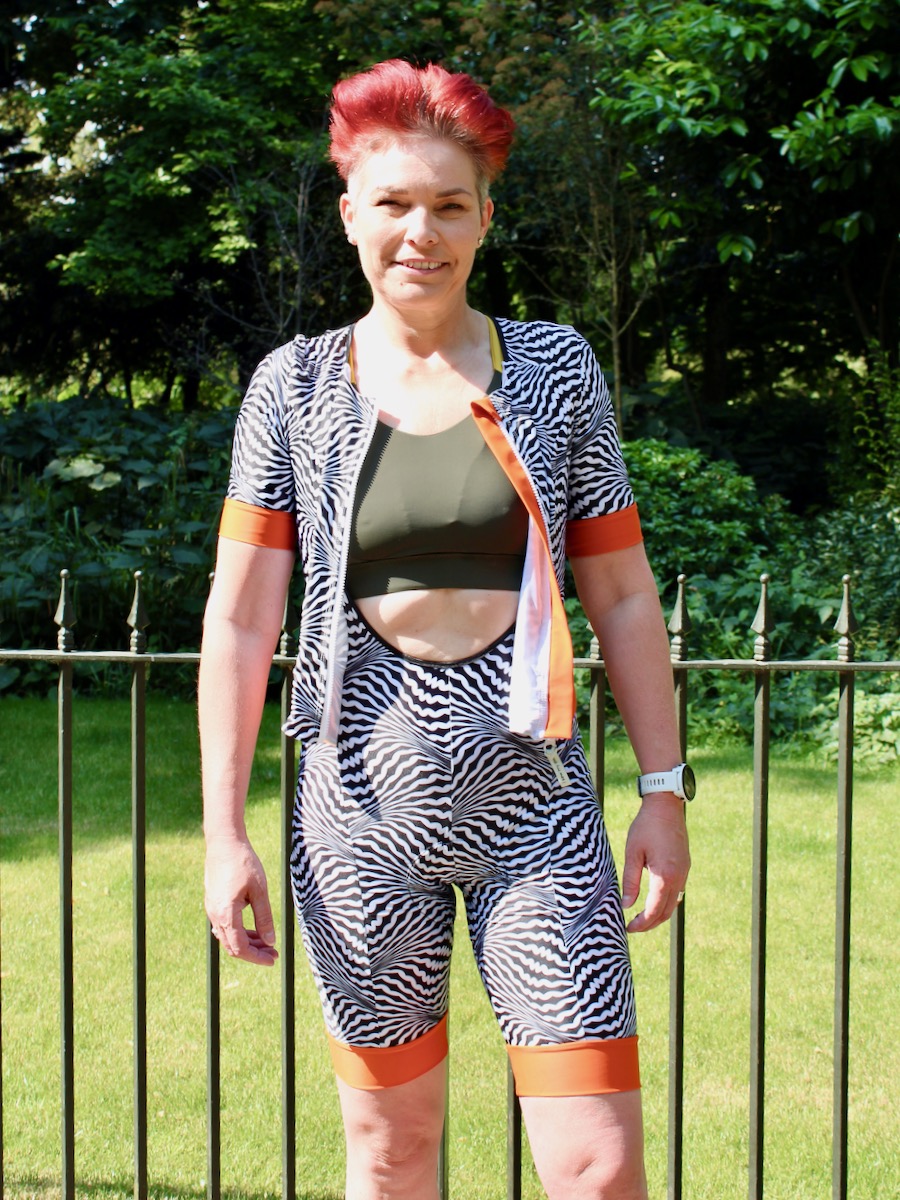
Thank you so much for your wonderful comments on the launch of our latest Triumph Suit sewing pattern earlier this week! It feels like such an accomplishment to finally get this one out into the world after so much work.
I’ve got SO much to say about this pattern, but today I wanted to share some of the really cool features in this pattern that may not be apparent at first glance.
Pockets
This pattern has the most pockets of ANY of our patterns – a whopping SIX in total! The lower back is compromised of three layers (two of exterior fabric with a layer of mesh in between), with top entry and side entry pockets between the layers, and a vertical dividing line of stitching to keep the contents from migrating around.
The side entry pockets have a scooped opening edged with FOE that’s still deep enough to keep the contents in place. This is where I usually keep my phone, for example.
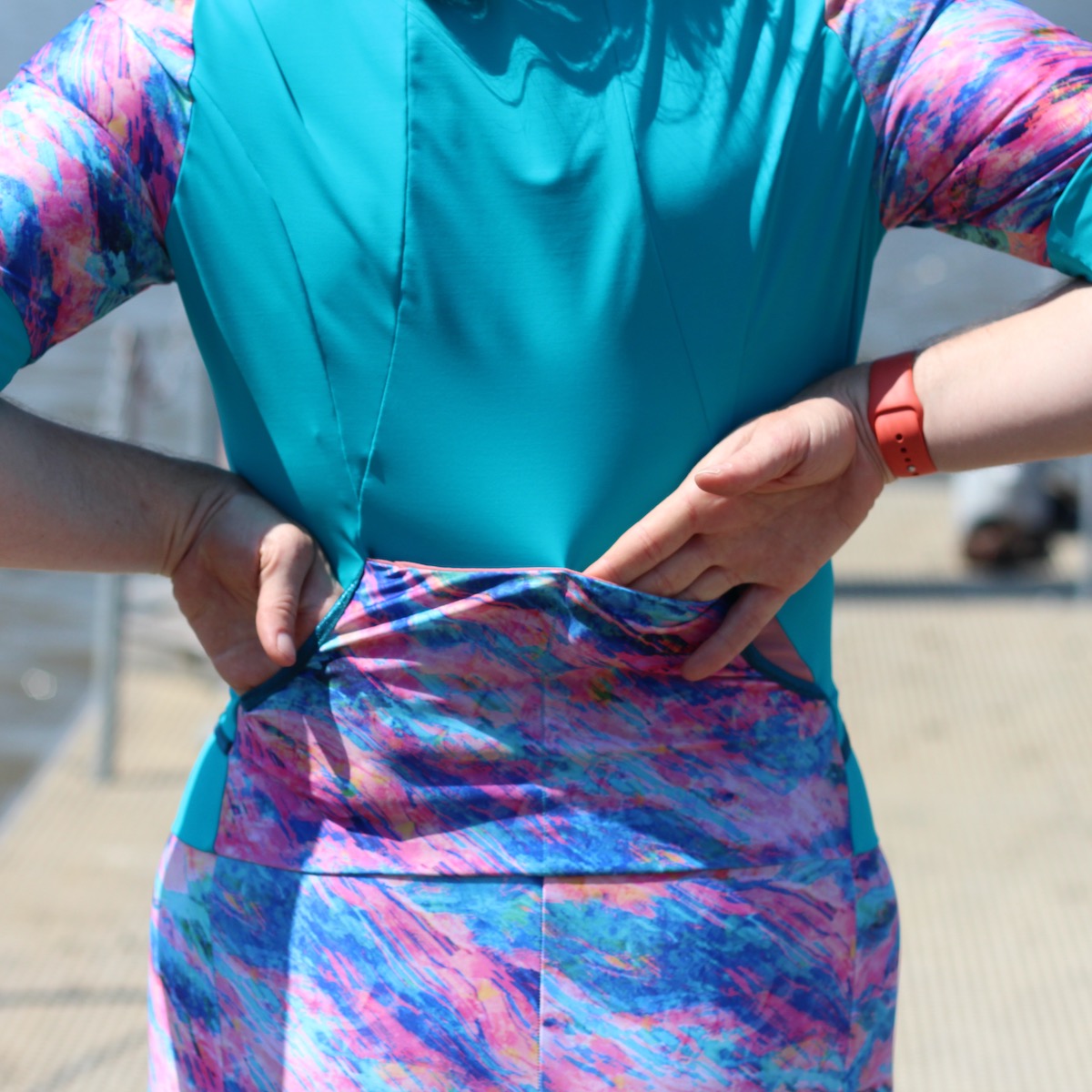
The top entry pockets in the back are separated from the side entry ones by a layer of stretch mesh, and the pocket top edge is reinforced with clear elastic. I usually keep my little tyre pump and spare inner tubes in here when I’m riding – it’s not as easy to access when you’re on the move, but great for things you want to keep on hand “just in case”.
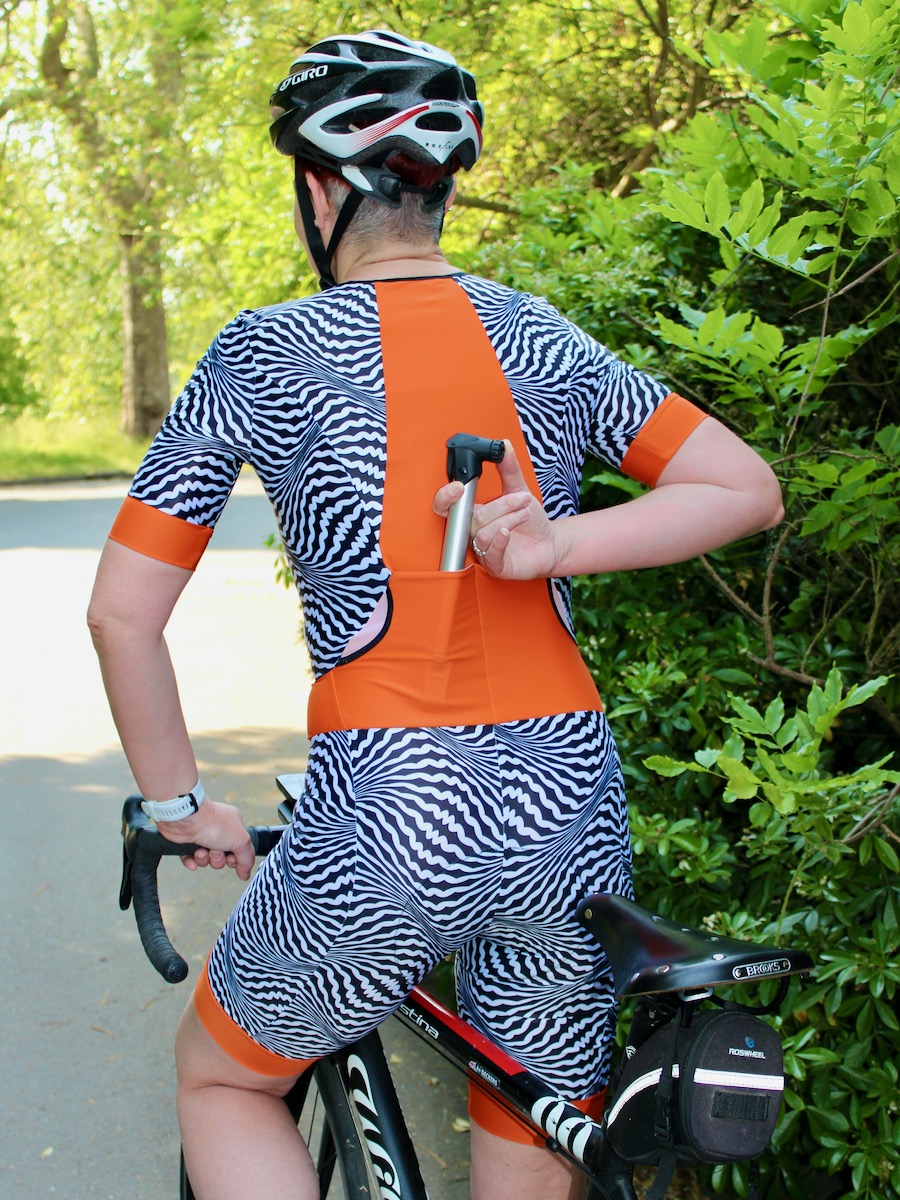
And finally, there are two smaller “easy access” pockets at the side waist that are perfect for gels and bars. I experimented with different closures for these with last year’s Duathlon prototype, but the simplest version edged with FOE ended up being the best! The instructions also include a Variation idea for an added flap on these pockets, which I demonstrated on the turquoise sample. For me though, it’s a little bit fiddlier to get in and out of with the flap, so I prefer the simpler one!
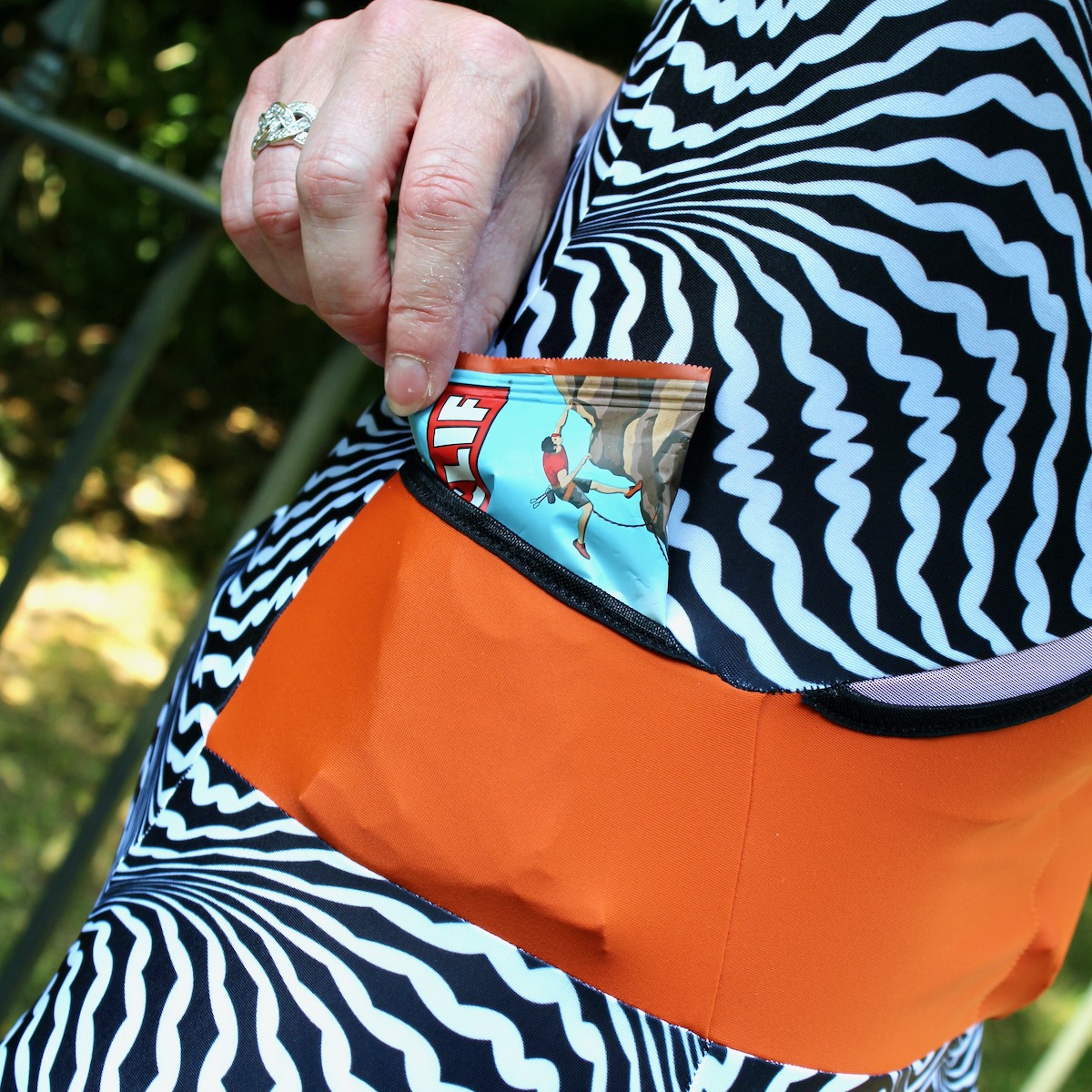
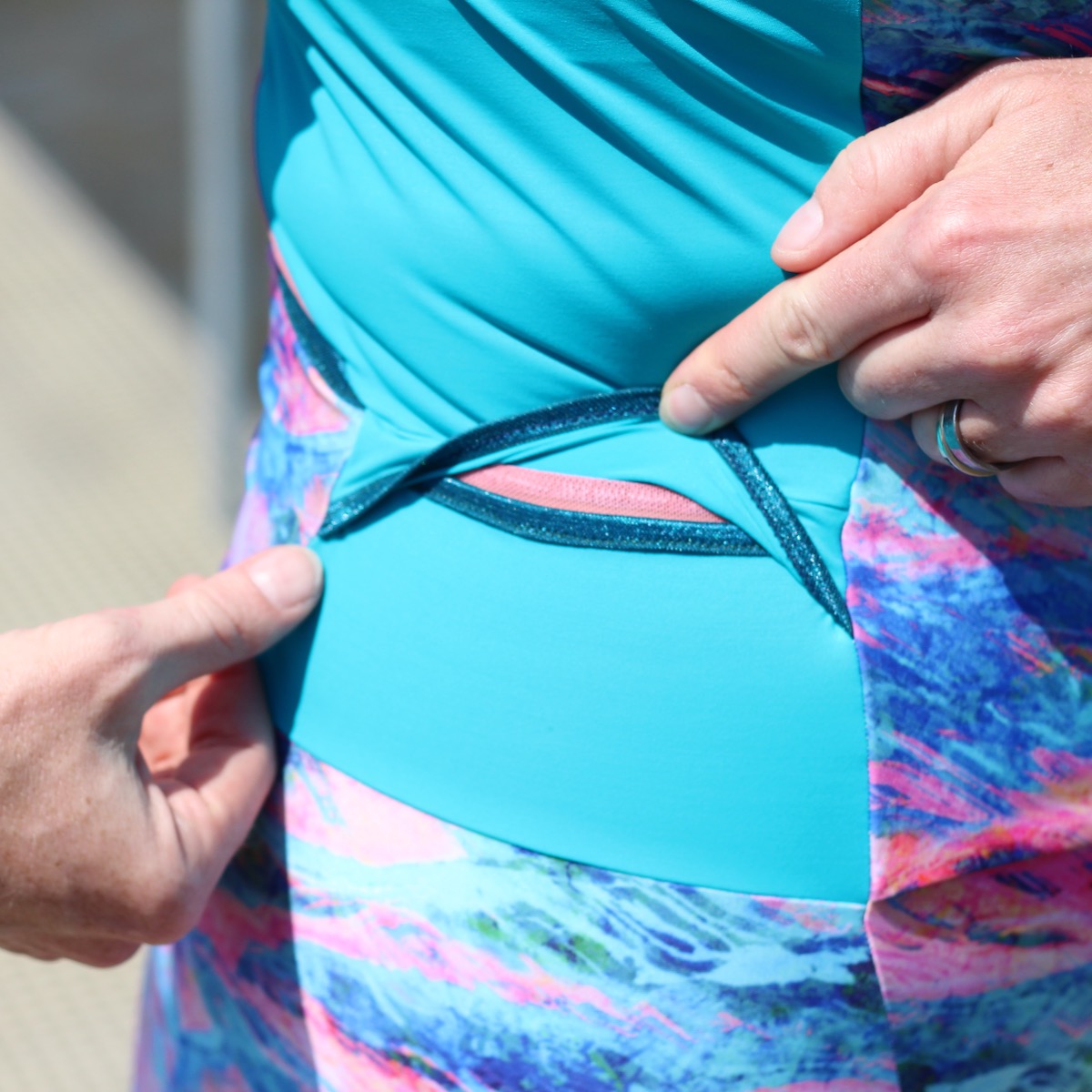
The Floating Front
I’ve had a few questions on what the “floating front” actually is, and essentially it’s a bodice front that overlaps with the front shorts but isn’t actually attached. So you can separate the front zipper fully to get in and out of the suit really easily, but you’re not feeling completely exposed unzipped, either. It also means I was able to draft a little bit more ease into the bodice front to make the fit a bit more comfortable, too.

Sleeves vs Sleeveless
I was horrified to hear that some folks assumed the sleeveless version was just omitting the sleeves! Oh no – the bodice pieces are different for the two views, with the armhole being a completely different shape from the armscye for the sleeve.
Furthermore, the construction methods between the two are distinct, too, with the Sleeveless view being almost entirely lined in stretch mesh, with the opening edges reinforced with clear elastic. The Sleeved view’s bodice is only lined at the centre front, with the other neck edges finished with FOE.
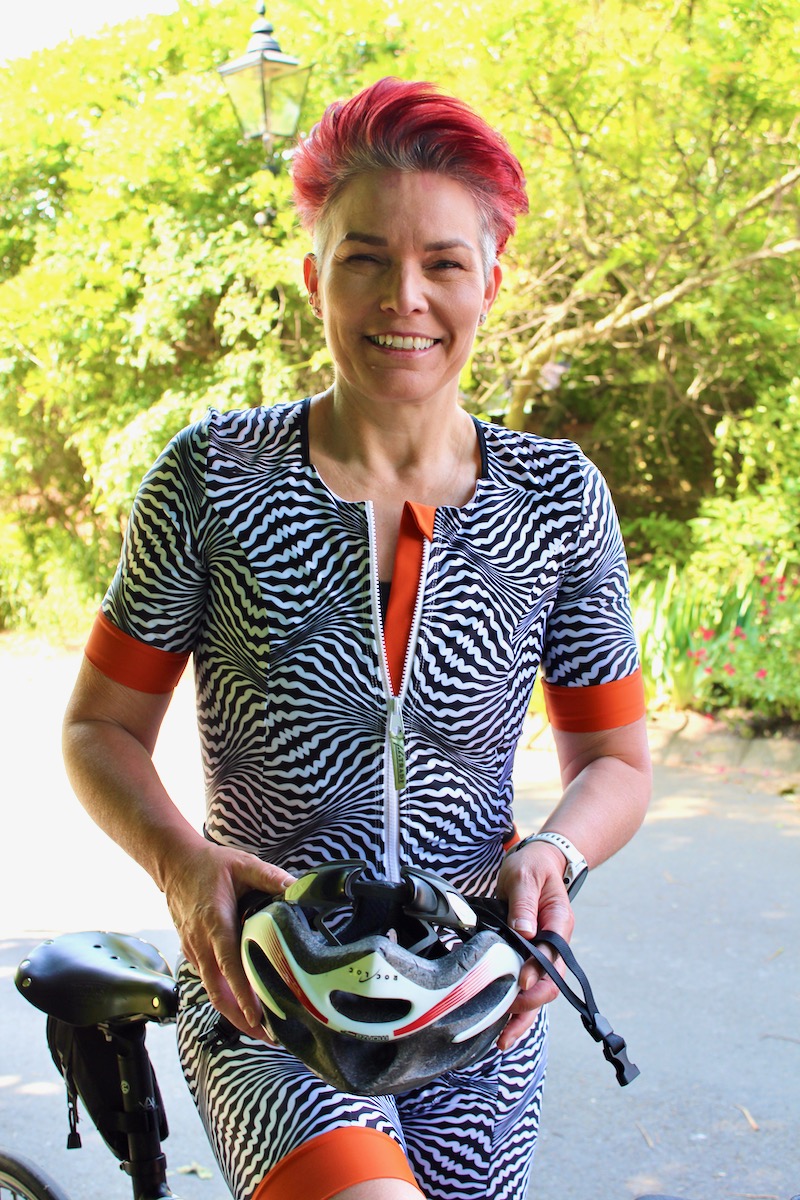
And the sleeves! These are classic cycling jersey sleeves, long and close fitting with a banded hem to stay in place. If you’re familiar with our Surf To Summit Top patterns, the Triumph Suit sleeves are much longer.
The Lining
As I mentioned above, the Sleeveless version has more lining than the Sleeved, but both use stretch mesh as a super lightweight, breathable lining that isn’t going to interfere with your activewear fabrics’ wicking capabilities. Note that the mesh is NOT used for supportive purposes here, so go with a lightweight, very stretchy mesh, not a lingerie power net.

It’s also used as pocket lining, so be aware that will be seen ever so slightly on the side pockets (unless you add a flap) and at the scooped edges of the back pockets. But with so many colours of stretch mesh available, it’s fun to pick something that coordinates nicely!
The Shorts
Because this suit must do triple duty, there was a LOT of trial and error in getting a shorts design that stayed in place in the cycling stance, but didn’t get in the way during the run or swim. These shorts have an elongated back line so they don’t ride up during cycling, but also a longer leg length to protect the legs from potential chafing during the swim or run, against the bike frame, and from the sun as well.

The hem band here is deeper than on our Rouleur Leggings pattern, and means you don’t need a coverstitch or twin needle at all for this pattern, either!
Shifted Seams
There are no traditional side seams on this suit – instead, there’s a panel on the side bodice to avoid any under-arm chafing during the run. There’s no side seam on the shorts, either, but that was more of a stylistic choice to be able to show off a wild print, if I’m being honest!

Additionally, the shoulder seams are shifted forward to create some visual interest with the upper back piece extended over to the front. The true shoulder line is marked on the pattern for ease of alterations, though!

Elongated Back
And finally, it wasn’t just the shorts that needed to be elongated in the back – the entire back length is longer than usual to accommodate the cycling stance. In development, I quickly found that a trisuit drafted to usual, standing body measurements basically meant an uncomfortable wedgie as soon as I got into the saddle.
Having a longer back length means that the suit is super comfortable on the bike, which will also likely be the longest portion of your triathlon.

So if you see excess folds of fabric in the lower back when you’re standing – STOP! Don’t remove these until you try out your suit on a On The Road (bike!) fit test, as you may be undoing this necessary feature. Or to use tech parlance, it’s a feature, not a bug!
Sale!
You can try out all these features for yourself if you use code SWIMBIKERUN20 for 20% off all digital sewing patterns until the end of June on shop.fehrtrade.com – including the new Triumph Suit sewing pattern!
What’s your favourite feature of the Triumph Suit?
